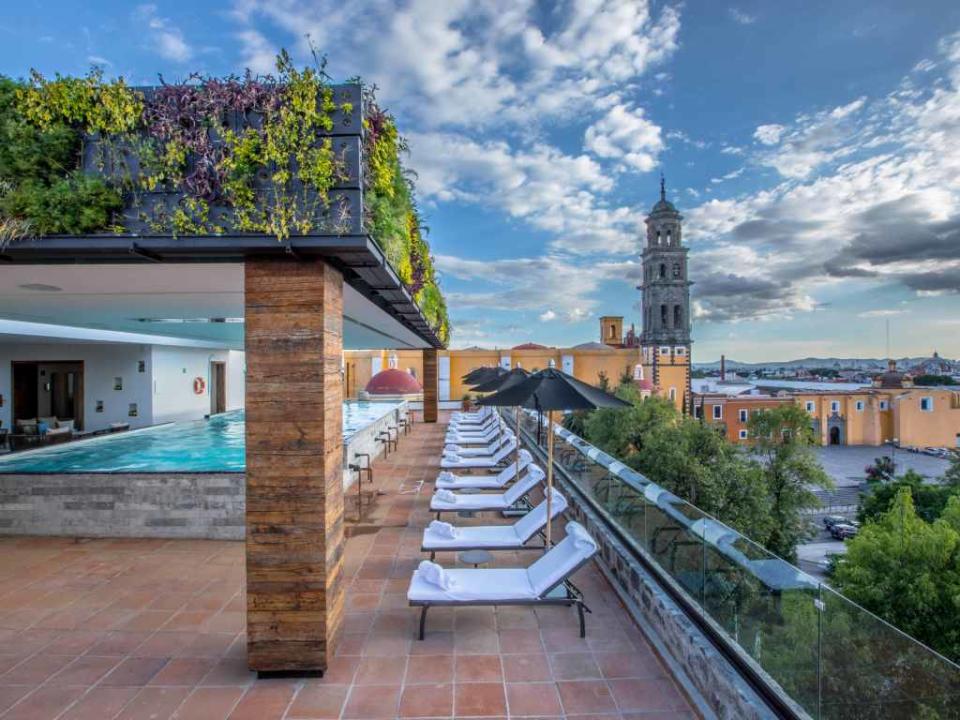These laid-back Mexican villages are the taco the town

From smog-choked Mexico City to the cartel-infested jungles of Tulum, Mexico can be a lot.
But tucked away from the tourist traps, from Baja to the Yucatán, are a rich collection of cultural gems.
In these pint-sized places, where the car horns and screeching camote sellers disappear into a concert of mariachi music and the faint hauls of marauding coyotes — even soothing silencio. Below is a look at Mexico’s best, most peaceful and safest small towns.
Mission possible

When the rampant development along Baja’s southern tip gets too annoying, Todos Santos, an hour’s drive from the San Jose del Cabo International Airport, beckons.
Founded as a mission 300 years ago, this once sleepy community, beloved by interloping artists and surfers, has certainly been discovered, but not bombarded — yet. Especially in high season, and especially on the popular Los Cerritos beach, there are no shortage of tourists.
Luckily, there are plenty of places to hide away. Try one of the reimagined haciendas in the historic center, or check into Villa Santa Cruz (from $700), a boutique hotel on the beautiful Playa Tortugas shoreline with ocean suites, bungalows and rooftop villas.

For ultimate relaxation, hit Paradero Todos Santos (from $600). It’s where guests go take in sweeping Baja desert views in hammocks and soaking tubs.
Mariachi mecca
Tlaquepaque is a town tucked into the booming city of Guadalajara that has somehow managed to retain a tranquil vibe. Hotels like the neocolonial La Villa del Ensue?o (from $113) let guests disappear into what was once a stately home.
Venture out into the rows and rows of colorful streets, like pedestrian-only Calle Independencia, and take in the textiles, tequila and ceramics.
Tlaquepaque is known for its pottery, much of which is crafted in the neighboring suburb of Tonalá,
and a union of 150 local artisans have set up shop next to Plaza Parian. Tlaquepaque is also an ideal place
to hear mariachi — which was born in Jalisco — and to eat excellent authentic cuisine.
Head to restaurants like El Patio, where an all-female mariachi band plays three afternoons each week.
Secret societies
Home to more than 800,000 residents and a thriving metal goods and machinery industry, northcentral
Mexico’s Querétaro is by no means a small town. But its colonial center, where Mexicans first declared their independence from Spain, feels that way with a grid of small, pedestrian-only streets. Here you’ll find Hacienda Jurica (from $150), a 16th-century marvel that was converted into a hotel in 1969.
There’s a stellar row of restaurants with outdoor patios fronting the Plaza de los Fundadores, which is a
short walk from the unique Museum of Calendars, the world’s first collection of ancient calendars.
An hour away lies an even smaller secret, Guanajuato, whose patchwork of pastel homes and boutique hotels stretch up the steep hills of the Mesa Central. The streets are tightly pinched together and best explored on foot. Once the world’s leading silver extraction center, this UNESCO World Heritage city is loaded with beautiful Baroque and neoclassical buildings, plazas and tunnel roads.
Holy molé

Puebla is another big city asking a small town. The country’s fourth-largest metropolis with 3.3 million residents, its core is also a Unesco World Heritage site with strollable streets radiating from the Zócalo, the town’s main square.
Like Querétaro, Puebla has revolutionary roots: In 1910, three brothers plotted the overthrow of the Porfirio Díaz regime and their house was surrounded by federal troops.
That same house is now on a pleasant street to shop for sweets. This is also one of the few places in Mexico where Cinco de Mayo means something, as it was in here that troops fought back the forces of Napoleon III in the Battle of Puebla.

The 19th-century Banyan Tree Puebla (from $239) combines three separate Renaissance- and neoclassical-style private homes. Guests of that hotel can walk safely to the historic center and try molé — in one of the places that first created the thick, brown sauce. En route is the oldest public library in the Americas, the Biblioteca Palafoxiana.
A cherry cobbler

Chiapas is Mexico’s poorest state in economic resources, but one of its richest in natural beauty. The highland valley’s pine forests offer a lush contrast to the country’s often arid climes.
Head to San Cristóbal de Las Casas. Its narrow, cobbled streets are colonial gems, where donkeys still deliver produce to buildings with wrought-iron balconies and red tile roofs. The hotel Sombra del Agua (from $111) has been welcoming guests since 1907, and its restaurant, Tarumba, serves some of the best food in town.
The Santo Domingo Church is home to the city’s large open-air crafts market and exquisite textiles made by indigenous people — who make up a quarter of Chiapas’ residents — and the Casa Na Bolom Museum.
